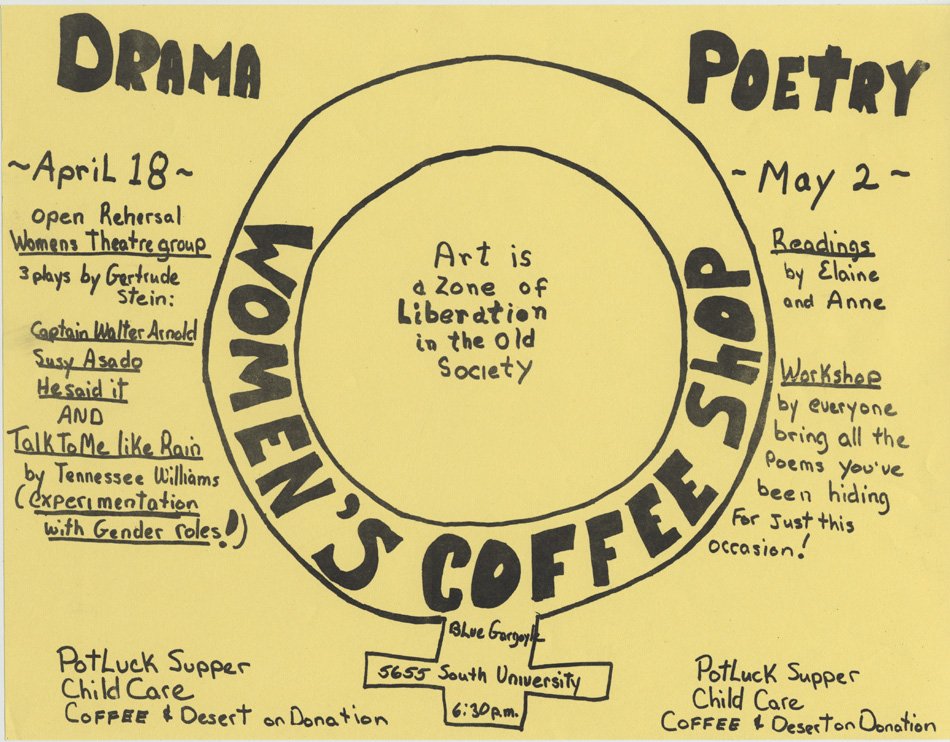"Second-Wave" Feminism on Campus
Growing out of the New Left on campus, "second-wave" feminism was apparent and active at the University of Chicago in the late 1960s. Female and male students, faculty, and administrators alike took aim at the University culture and curriculum. Feminist organizations on campus were informed by and took part in the nationwide women's movement. In 1967, the Women's Radical Action Project (WRAP) formed as the University's first women's liberation group. WRAP members gathered to discuss politics, learn about self-defense, and create art through consciousness-raising sessions, classes and coffeehouses. Chicago feminists also focused on spreading their movement to women throughout the city through organizing and outreach projects.
Feminist pressure led the administration to open a women's center near campus. The location offered a variety of resources: fielding women's health concerns, distributing reading materials, and holding workshops on topics of particular interest to women. To impart knowledge absent from the Chicago curriculum, the Women's Experimental College of Hyde Park offered courses in subjects ranging from home economics, computer programming, and women's literature.
Questions of sexuality dominated activism and social life in this era. Increasingly, women's and gay rights organizations cosponsored alternative social and cultural events. The annual Washington Prom was replaced by the Lascivious Costume Ball in February 1970, and in the same month 180 members of Students for Non-Violent Action took part in a co-ed skinny dip in the pool at Ida Noyes. Such events challenged traditional norms at Chicago, providing alternatives to students who opposed a heterocentric or sexist culture.

